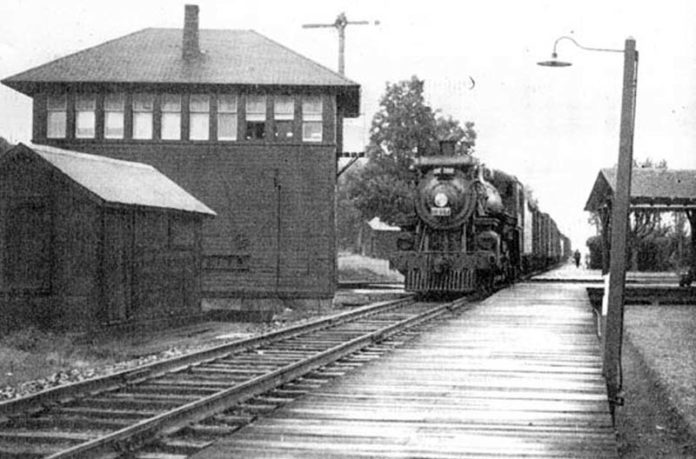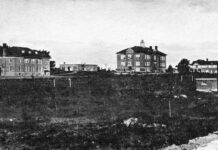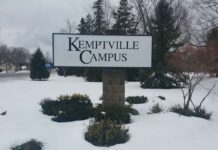by Craig I. Stevenson
The designation of the Kemptville Campus woodland area as a Forest Stewardship Council-certified forest is very welcome news. The certification adds “brand” value to the Campus and is a concrete example of the type of environmental measure that is of demonstrable ecological benefit. The individuals who worked to achieve the FSC designation are to be commended for their vision.
The designation presents another opportunity to add value to the Campus forest as a community asset. At the event announcing the certification, Mr. Peter Wensink made note of the forest’s long history—including its use by homeless transients during the Great Depression of the 1930s. This was no accident. The site of a “hobo camp” at the forest was the direct consequence of the area’s importance as a railway crossroads at the time.
Today, Bedell Road stands as the nominal reminder of what was once called “Bedell Crossing” by the Canadian Pacific Railway. The crossing was an intersection of rail lines—the doubled CPR mainline and siding tracks running east and west, and the single line of the former Bytown and Prescott Railway running north to south. A range of facilities at Bedell Crossing served this busy location—a station and platform, a tower to govern train movements through this intersection, and a water tank to service locomotives during the steam age.
All of this is gone now. The station site is used as a maintenance yard by the CPR, the sidings have been severed from the mainline, and only a fading outline remains where the single track to Ottawa curved westward toward Smiths Falls. The line south toward Prescott is a shortened industrial spur, and an inactive signal mast broods over the mainline, relieved of its guiding responsibilities.
Along the junction’s northern edge remain the Campus woodlands—the very spot where Depression-era hobos camped and decamped, drifting across Canada during a desperate age.
Which brings us back to the certification of this same forest. The FSC certification raises it above the level of an ordinary bush lot, recognizing that it has been, and remains, important to the Campus as a whole. What it lacks is a name.
The certification presents an opportunity to weave together past and the present, all through one key piece of the local ecological landscape, by branding the Campus woodlands with a name that reflects its connection to the nearby rail junction.
A name like “Bedell Forest”, or another of similar historical connotation, would anchor these lands to their adjoining historical past and shake a bit of historical spice over the Campus at large. That label would also be a public acknowledgement of a place and time when the train mattered here, and a symbolic nod to those who worked and travelled the rails.
The gesture would, at little expense, add an intangible sense of depth to a place and time all but forgotten.









